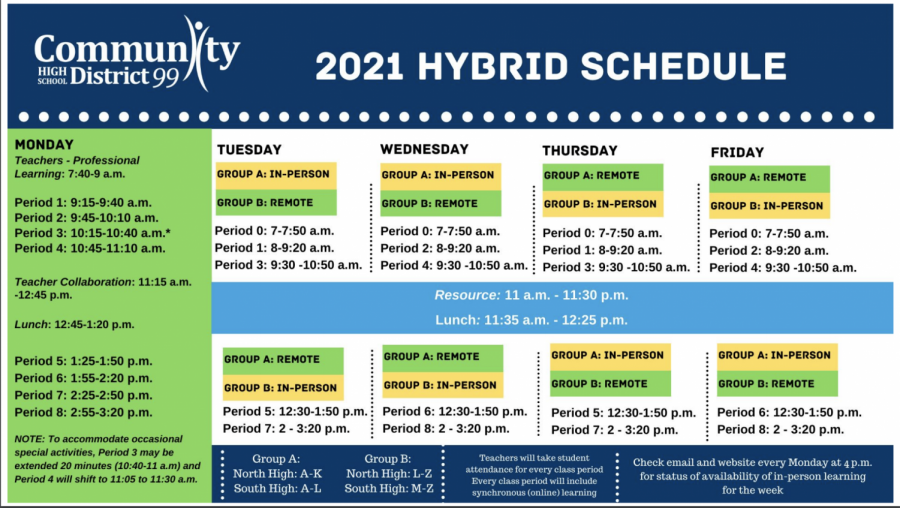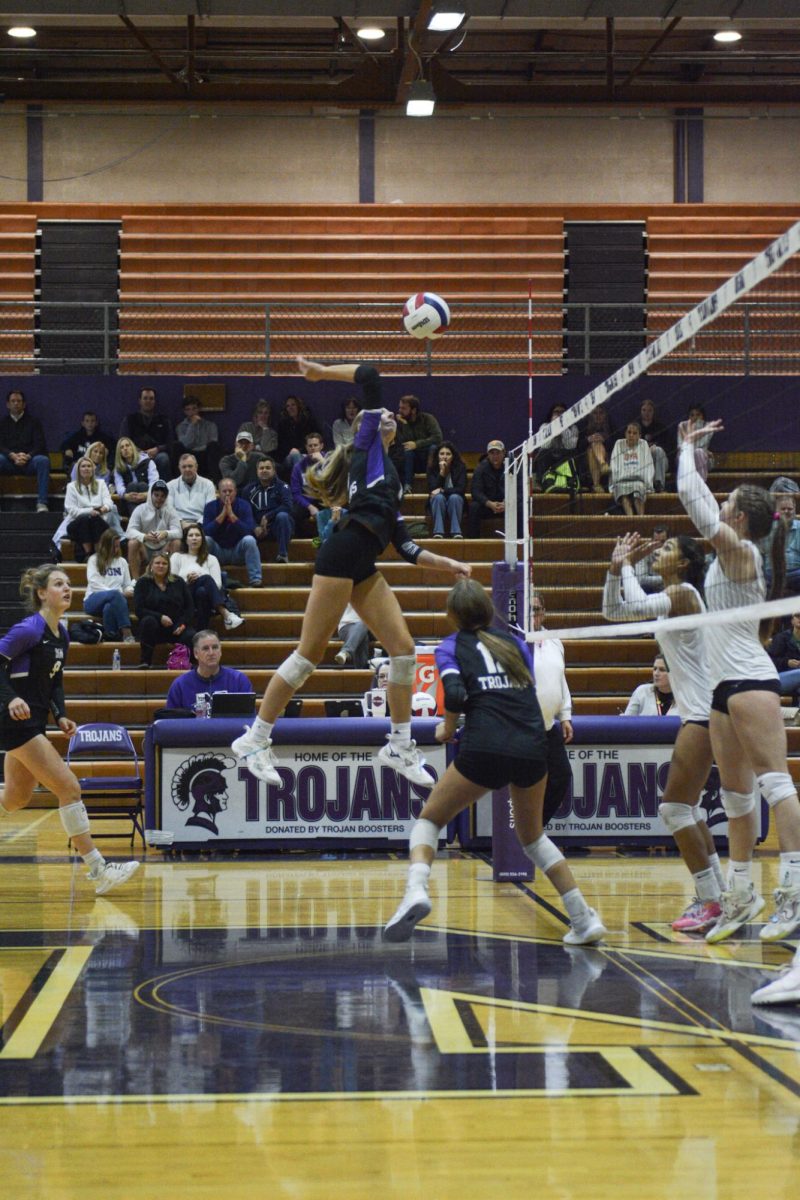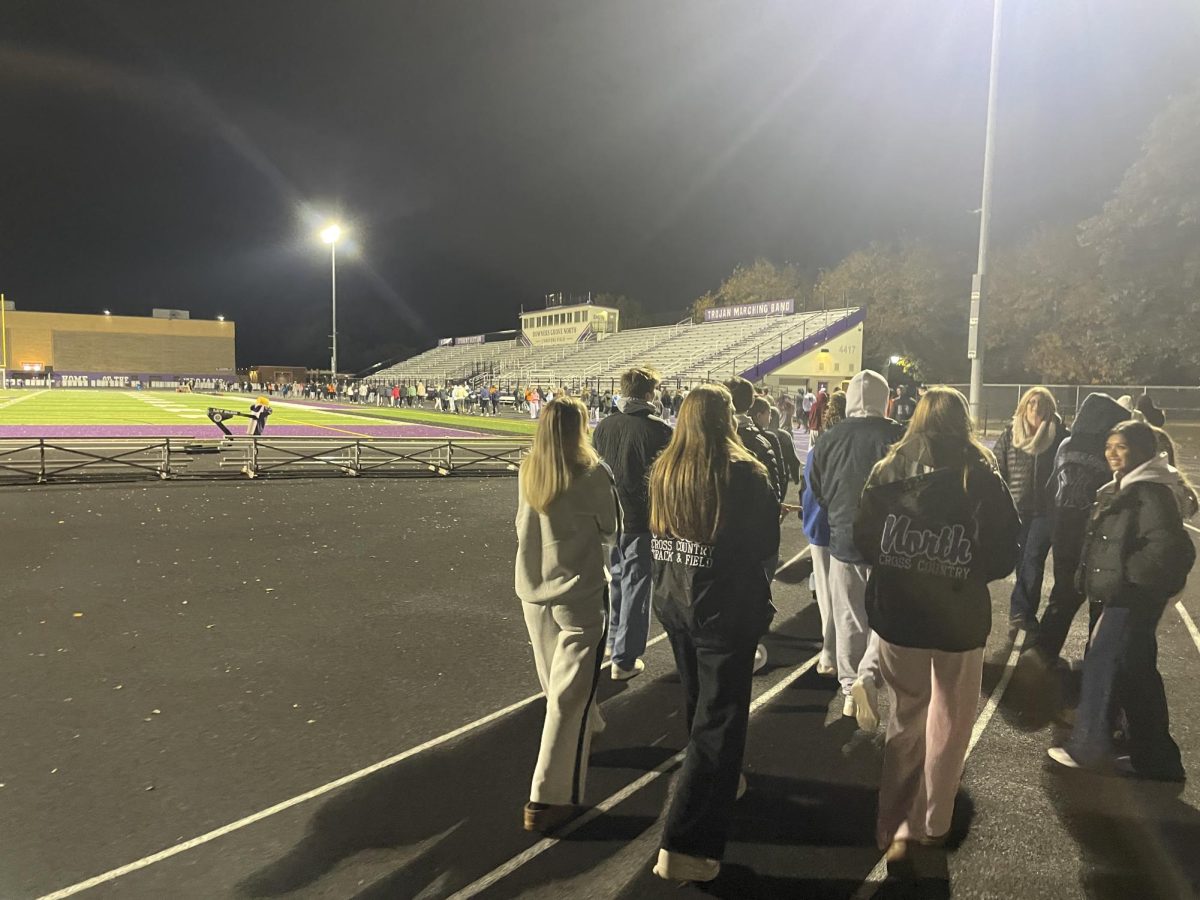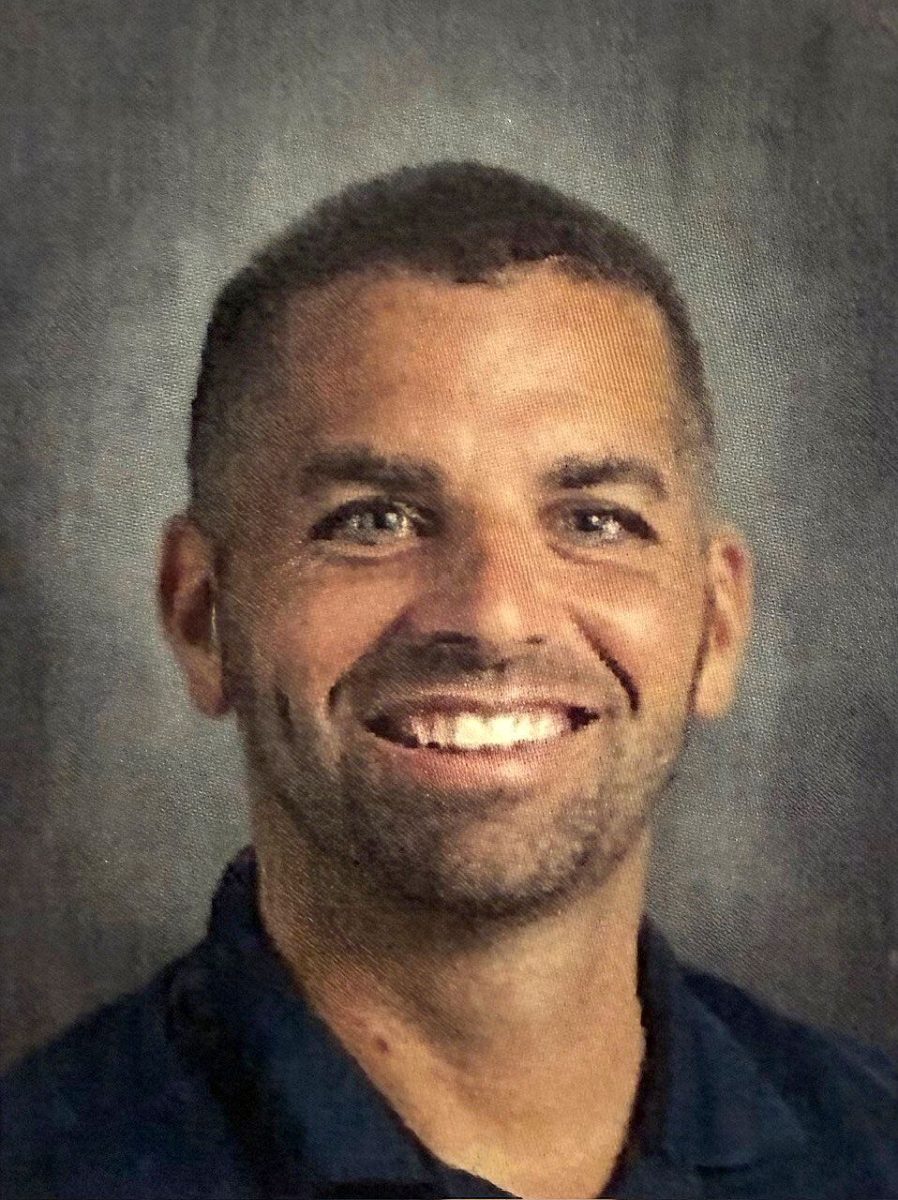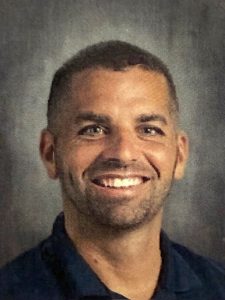Bull’s Board Corner: December 14
December 15, 2020
Hey, students. This is a series of news updates by me, Omega Editor-in-Chief and District 99 Board of Education Student Representative Sam Bull, that is designed to inform you, the DGN student body, of the most relevant changes, decisions, and updates from the most recent Board of Education meeting. In other words: this is exactly what you need to know from every Board meeting.
This week’s Board meeting featured quite a bit; here’s a rundown of some of the most important items discussed as they relate to you, the student body. Grab your popcorn and read carefully… this meeting was almost 5 hours long!
Recognitions:
The Illinois Principals Association has awarded Mrs. Schwarze the DuPage Region High School Principal of the Year! She is now a candidate for Illinois High School Principal of the Year.
Return to In-Person Learning:
A new hybrid plan was introduced to the Board last night, featuring more in-person learning opportunities for all students. The plan will be implemented Jan. 5 through spring break if the metrics referenced later in this article are within the boundaries set by the district.
The plan features the same schedule as this semester with the same length and number of periods as well as the same all-remote Monday schedule.
This hybrid schedule will also feature Group A (A-K this time, not A-L) going into school on Tuesday and Wednesday mornings as well as Thursday and Friday afternoons, seeing each teacher and attending each class once throughout the week. Group B (L-Z) will go into school on Tuesday and Wednesday afternoons as well as Thursday and Friday mornings. The groups were changed in order to even out the number of students in Groups A and B.
Passing periods have been reduced to 10 minutes as well in order to accommodate bussing schedules. Additionally, period 3 will be extended an extra 20 minutes once per month on Mondays in order to accommodate for special activities such as PBIS. This would then push period 4 back an extra 20 minutes to 11:05 to 11:30 a.m.
The metric requirements for determining if school may return have also changed. There are 8 zip codes that make up where all District 99 students are from. Originally, all 8 zip codes were counted equally by population to determine COVID metrics and, therefore, whether we should go back to school, despite small numbers of students coming from those big towns. As of yesterday, the district has moved into a more representative approach that only considers 5 of the 8 zip codes (which together represent 96% of the student body) in consolidating COVID metrics in order to determine whether to go back to school. The metrics in consideration that use the 5 zip codes are positivity rate (must be below 9%) and the number of new cases per 100,000 residents in the 5 zip codes (must be between 50-200). Our 5 counted zip codes must have metrics in the bounds of ONE OF THESE TWO requirements (as well as additional factors like no outbreaks in school, availability of teachers and students, and ability to follow up on student and staff illnesses in a 24-hour period) in order to return to school. As of Friday, the positivity rate is 9.49% and the number of new cases per 100,000 is 396.4.
Here is a list of some of the most important details presented by Dr. Thiele last night (click here for the full presentation and click here and scroll to 31:30 to watch Thiele present it).
- Thiele began by insisting that it is and always has been the goal of the district to return in-person and that he must listen to the science to make the best decision and work to create the safest environment for students, staff, and parents.
- The district is combining the elements of instructional programming, strategies and guidelines, and community transmission in order to try to hit the green “unlikely to spread” box, which falls between “no chance of spread” (being 100% remote) and “likely to spread” (a more lenient hybrid model).
- Thiele emphasized that the school must have enough students in the classroom to have meaningful interactions and experiences (a minimum of 50% in person)
- The district considered ¼, ⅛ models… but they wouldn’t have had enough students in-person to be effective
- Teachers will have the discretion to tailor the given time for teaching a class based on student needs/curricular objectives, including using different lessons/activities, the structure of time, format/grouping of students, and homework/assessments.
- Here are all the key changes for the second semester:
-
- 4 days of in-person learning each week (Group A: T/W mornings, Th/F afternoons. Group B: T/W afternoons, Th/F mornings).
- Attend every class once weekly in person with no planned fully remote weeks.
- Passing periods reduced to 10 minutes.
- Lunch block extended an extra 10 minutes.
- Resource periods will always follow morning courses.
- Students may opt-in to remaining on campus for lunch/study periods.
- DGN’s alphabetical groups have changed from A-L and M-Z to A-K and L-Z.
- Additional nursing support
- Changes in metrics referenced above
- The district will commit to this model through spring break if metrics allow
-
- What remains the same:
-
-
- The fully remote learning option for students (Fully remote students must commit to fully remote through spring break).
- All safety measures for in-person
- Bus transportation
- Teacher office hours
- Resource periods
-
- In sum, hybrid will be offered starting Jan. 5 under the following conditions:
-
- Positivity below 9% in district community OR 125/100K new cases based on a rolling average of the past 14 days (recorded each Friday).
- No ongoing outbreaks at school (outbreak = 5 or more cases that are linked to a common location during a 14-day period)
- Able to follow up on student/staff illness and close contacts in a 24 hr period
- Adequate students/staff available (We will have to go fully remote if there are too many student or staff illnesses, especially with nurses, custodians, transportation workers, administrators, substitute teachers, and teachers).
- Staff with approved accommodations continuing to work off-site.
-
- The school has also started the process for a CLIA certificate in order to attempt to get school-based testing and is awaiting instruction on any future vaccine protocols for teachers (who are in group 1b of those who can receive vaccines). Thiele stated that plans are currently in development for testing and more will come in January.
Academic Supports:
- Many new academic supports have been added this year to aid with remote and hybrid learning (check stream around 2:55:00 for the full presentation from Mrs. Ziccardi)
- This year’s changes: the highest grade earned (whether it be the original grade or grade earned when the class was taken again) will factor into a student’s cumulative GPA instead of always the second time. Failing a class then passing it will result in only a passing grade reflecting on the GPA now.
- The District is also partnering with a company called Paper starting next semester, which will provide instant and unlimited 24/7 online academic support in English and Spanish.
- This includes chat-based tutoring and professionally trained tutors for every student in D99
New Courses Approved for the 2021-2022 school year:
- Course #1: English IV: Black American Literature
-
-
- Eligible grade level: 12, 0.5 credits, must have successful completion of English III/AP Lang
- Reading course that is taking the place of one that was older and not popular
- Students will…
- Exploring literature written about/by Black Americans
- Examine texts focusing on the evolution of Black culture in America
- Explore novels, speeches, texts, works of art, music, in order to understand the impact they have had on society and culture
- Produce critical analysis of a text, personal reflection, creative works, hold research-based discussions tied to texts/works
- The class will be chronologically organized with references to contemporary work
-
- Course #2: Incubator for Entrepreneurs:
-
- The class will replace the entrepreneurship course and will be a much more hands-on style class that allows students to leave the class with the tools to actually start the business they were working on in class.
- Goal: bring together the community, engage with students
- The course is set up to work through all components from the inception of an idea within groups to the actual product/service/company getting to the point where a business could begin
- A key aspect is the use of community partnerships
- It is the “Next level” of student education for CTE, business start-ups
- Students will leave the course with a completed business model canvas, competitive analysis, financial model, minimum viable product, pitch deck, future communications plan, and future funding plan.
Public Comments:
- Many people commented at this Board meeting, with the vast majority about returning to learning in-person. Check the YouTube stream of the Board meeting linked above to see it (it’s near the end).


